It looks like you're using an Ad Blocker.
Please white-list or disable AboveTopSecret.com in your ad-blocking tool.
Thank you.
Some features of ATS will be disabled while you continue to use an ad-blocker.
share:
a reply to: MagicWand67
Of course you wouldn't call it a contrail. You wouldn't call it anything because you wouldn't see it. It would have nothing to do with current nonsense "chemtrail" meme. So why call it a "chemtrail"? To stubbornly claim vindication?
It would still be a chemtrail. There's no way in hell you can call it a contrail that's for damn sure.
(post by MagicWand67 removed for a manners violation)
a reply to: DenyObfuscation
No, you misunderstood what I said.
I am 99% against it. The 1% being reserved in case of the absolute proof that the risks don't outweigh the benefits.
You're cool with spraying tons of sulfuric acid into the stratosphere each year?
No, you misunderstood what I said.
I am 99% against it. The 1% being reserved in case of the absolute proof that the risks don't outweigh the benefits.
edit on 21-6-2014 by
MagicWand67 because: (no reason given)
a reply to: MagicWand67
Apparently. Notice I deleted the question.
No, you misunderstood what I said.
Apparently. Notice I deleted the question.
Looks like we agree on something.
I am 99% against it. The 1% being reserved in case of the absolute proof that the risks don't outweigh the benefits.
Just a helpful reminder, to the extent an OP ever can on a thread...but this is absolutely *NOT*, even a little bit, about the debate of Chemtrails or
the back and forth any number of threads cover in great detail for how that specific word is used or thought of.
The physical process by which a substance is ejected out the rear of an aircraft and into it's slipstream in theory or reality by the planning currently on the table for policy makers and advisors around the world is simply that. A physical process ..and it's a process meant to cause artificial engineering of our climate. In this case, for what the people doing It seem to believe (and I think they do, at heart) is a good and necessary thing.
In adding to that though, I'll say many many horrible things have happened in history that were based on good intention and perceived necessity.
That's really where my concern is since learning the scope of Solar Radiation Management/Mitigation. Not the process by which it's done, near as much as the outcomes both intended and likely unintended to the planet as a whole.
It's a topic too often lost in the details of highly controversial terms, when Geoengineering is, at the base, the term common to descriptions of it all by those very people who discuss and plan futures with it, for a living.
The physical process by which a substance is ejected out the rear of an aircraft and into it's slipstream in theory or reality by the planning currently on the table for policy makers and advisors around the world is simply that. A physical process ..and it's a process meant to cause artificial engineering of our climate. In this case, for what the people doing It seem to believe (and I think they do, at heart) is a good and necessary thing.
In adding to that though, I'll say many many horrible things have happened in history that were based on good intention and perceived necessity.
That's really where my concern is since learning the scope of Solar Radiation Management/Mitigation. Not the process by which it's done, near as much as the outcomes both intended and likely unintended to the planet as a whole.
It's a topic too often lost in the details of highly controversial terms, when Geoengineering is, at the base, the term common to descriptions of it all by those very people who discuss and plan futures with it, for a living.
a reply to: Wrabbit2000
Well the scope doesn't seem too far reaching..
Take Australia for example, hot dry and vast open spaces, yet no sign whatsoever of any kind of SRM.
No mirrors to reflect the sun, nor any huge solar farms, solar energy makes up 1% of electrical energy.
No salt water seeding despite being surrounded by the ocean.
No cloud seeding apart from a concentrated effort in the snowy mountains.
And hardly any trails in the sky from planes, certainly nothing off a regular flight path.
Well the scope doesn't seem too far reaching..
Take Australia for example, hot dry and vast open spaces, yet no sign whatsoever of any kind of SRM.
No mirrors to reflect the sun, nor any huge solar farms, solar energy makes up 1% of electrical energy.
No salt water seeding despite being surrounded by the ocean.
No cloud seeding apart from a concentrated effort in the snowy mountains.
And hardly any trails in the sky from planes, certainly nothing off a regular flight path.
a reply to: AlphaHawk
How sad is this? I am in the woods and not campfire/tent level, but sure not my normal tech center I made myself.. Yet here I am. I must just love you guys that much.
Back on topic, I envy you folks down under. Some in your gov't may have had a tall mug of kool-aid, but I'll always recall a couple guys I listened to for hours on a cross country flight. One was American and the other an Aussie. They must have compared a hundred things over the time of the flight, including climate change and things done about it.
What stuck with me was how down to earth the Australian was and how "no BS" common sense It sounded down under.
No nation is perfect, but perhaps some work closer than others. (Warm smile)
Everything about active SRM measures strike me as totally against common sense. So, it doesn't surprise me it's not a major topic there.
How sad is this? I am in the woods and not campfire/tent level, but sure not my normal tech center I made myself.. Yet here I am. I must just love you guys that much.
Back on topic, I envy you folks down under. Some in your gov't may have had a tall mug of kool-aid, but I'll always recall a couple guys I listened to for hours on a cross country flight. One was American and the other an Aussie. They must have compared a hundred things over the time of the flight, including climate change and things done about it.
What stuck with me was how down to earth the Australian was and how "no BS" common sense It sounded down under.
No nation is perfect, but perhaps some work closer than others. (Warm smile)
Everything about active SRM measures strike me as totally against common sense. So, it doesn't surprise me it's not a major topic there.
edit
on 6/21/2014 by Wrabbit2000 because: (no reason given)
a reply to: Wrabbit2000
That kind of illustrates what I meant by having chemtrail in the title when it's actually a real and serious topic. The word invites this kind of response. It's all very well, as some have already said, "considering" aerial SRM activities as chemtrails. The simple fact is that the term chemtrail, and the claims of chemtrails, were specifically coined for long white trails in the sky that some people didn't understand and which aerial SRM spraying would not resemble. Moving the goalposts to avoid looking silly doesn't work, why not just have the discussion?
Apart from the word itself, I completely agree that we are in great danger of saving ourselves from climate change by wiping ourselves out. The cyclical forces of nature have been cleansing and regenerating this planet for aeons, they will also, IMHO, also eventually counteract any efforts we might make to "help" them.
I'm not sold on global warming as a made made phenomena, that's too convenient in my book. "We broke it, so we have to fix it" smells of justification.
Climate change has been a natural part of earths cycle of existence since time began. Have we accelerated or exacerbated it? Possibly. But definite claims that we have sound desperate to me.
Is GE or SRM going to result in a net loss, or gain of wealth for the practitioners? That's usually a good pointer for motive. I don't buy all the "evil scientist" balls that people write on here. The scientists are trying their best to learn and understand. It's what science is. The scientists aren't the ones with the agenda's. Who is pushing for cloud ships and spray fleets, if anybody is actually pushing? That's where any ulterior motive will lie.
Bottom line is, we just don't know and we should stop pretending that we do, no to SRM, unless it can somehow be proven that, as magicwand67 said, the benefit really does outweigh the risks.
That kind of illustrates what I meant by having chemtrail in the title when it's actually a real and serious topic. The word invites this kind of response. It's all very well, as some have already said, "considering" aerial SRM activities as chemtrails. The simple fact is that the term chemtrail, and the claims of chemtrails, were specifically coined for long white trails in the sky that some people didn't understand and which aerial SRM spraying would not resemble. Moving the goalposts to avoid looking silly doesn't work, why not just have the discussion?
Apart from the word itself, I completely agree that we are in great danger of saving ourselves from climate change by wiping ourselves out. The cyclical forces of nature have been cleansing and regenerating this planet for aeons, they will also, IMHO, also eventually counteract any efforts we might make to "help" them.
I'm not sold on global warming as a made made phenomena, that's too convenient in my book. "We broke it, so we have to fix it" smells of justification.
Climate change has been a natural part of earths cycle of existence since time began. Have we accelerated or exacerbated it? Possibly. But definite claims that we have sound desperate to me.
Is GE or SRM going to result in a net loss, or gain of wealth for the practitioners? That's usually a good pointer for motive. I don't buy all the "evil scientist" balls that people write on here. The scientists are trying their best to learn and understand. It's what science is. The scientists aren't the ones with the agenda's. Who is pushing for cloud ships and spray fleets, if anybody is actually pushing? That's where any ulterior motive will lie.
Bottom line is, we just don't know and we should stop pretending that we do, no to SRM, unless it can somehow be proven that, as magicwand67 said, the benefit really does outweigh the risks.
edit on 22-6-2014 by waynos because: Got member name wrong.
Good morning everyone! I've been out hopping around the net and collecting additional information for this specific topic. In fact, I've found more
description about methods of deployment into the atmosphere, since that does seem the higher area of interest for readers on this topic. It's not just
about aircraft. Well, not just about jet aircraft anyway.
He has one idea which is somewhat novel. The other method is currently in use across China for climate modification through seeding for precipitation control.
Geoengineering is more properly used as the term for the overall approach to climate modification and control. That includes things like Cloud Seeding, as Britannica notes here...
Whew... Well.. Some bad ideas actually DO NOT see the light of day. Thank God for that on the last part mentioned there. (sigh) Science.... This is the problem at times, in my opinion. Too often the question comes to be "Can we?" not..."SHOULD we?". At least nuclear weapons to alter climate was determined as 'can't' regardless of how they came to that conclusion.
They come back to the same idea in the end though. Even old reliable Encyclopedia Britannica comes back around to injection of sulfur particulate into the stratosphere. They note the troposphere is also viable but not as effective for a lower level of absorption and hence, reflectivity achieved in the end.
This last one is a PDF of roughly 18 pages and was generated through NASA in September of 2009. (It's a LONG name..but then, it's NASA and words are something they don't have a budget problem with..lol)
Geoengineering by stratospheric sulfur injection and volcanic analogs: Applications for a 3-D chemistry-climate model with aerosol microphysics
(Actual URL for reference: "gmi.gsfc.nasa.gov/mtgs_rpts/2010_09/weisenstein_geoengineering.pdf")
One of the early graphics for this actually shows a blimp being the vector for sulfur injection. I've seen aircraft, balloons (after the above now), artillery and more. This makes my first for seeing a blimp as the delivery vehicle.
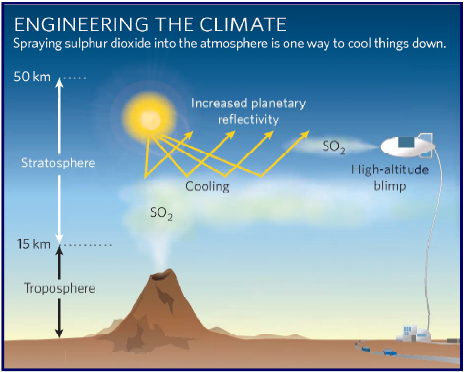
They also do depict in another area what the physical process of deployment by aircraft would look like.
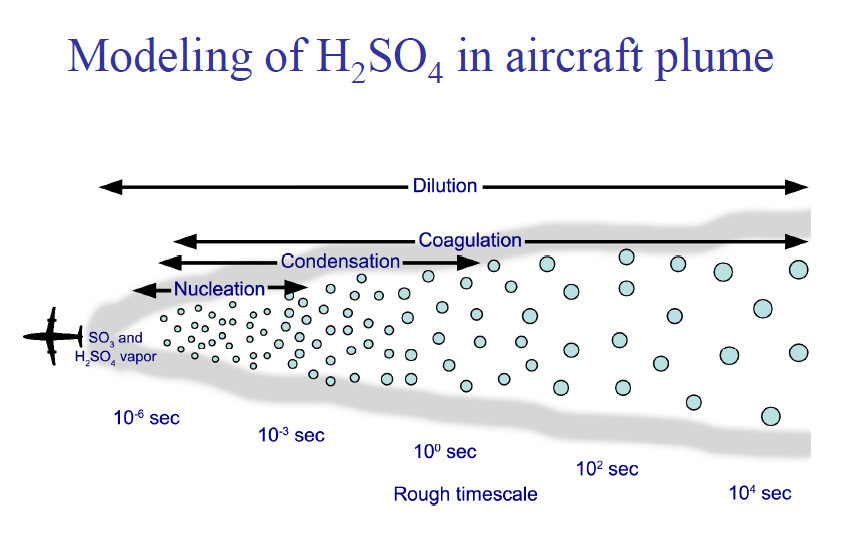
Now I think what makes the PDF most valuable is the in-depth look they take at the raw science of what may happen or not happen if sulfur is deliberately injected. In one notable part, they compare potential downsides as equal to CFC pollution that currently impacts our Ozone layer. So, it appears to be a fair and balanced, two sided analysis of the process and repercussions likely to be seen from it.
I hope this helps add to the body of material we have to consider and look at for the topic and what is being seriously considered by world authorities and experts to pursue it.
injecting sulfur into the atmosphere to slow down global warming is worthy of serious consideration, according to Nobel laureate Paul Crutzen from the Max Planck Institute for Chemistry in Germany and the Scripps Institution of Oceanography, University of California at San Diego. His thought-provoking paper1 is published in the August issue of the Springer journal Climatic Change, devoted this month to the controversial field of geoengineering.
He has one idea which is somewhat novel. The other method is currently in use across China for climate modification through seeding for precipitation control.
Source: Science Daily
In Crutzen’s experiment, artificially enhancing earth’s reflective powers would be achieved by carrying sulfur into the stratosphere on balloons, using artillery guns to release it. In contrast to the slowly developing effects of global warming associated with man-made carbon dioxide emissions, the climatic response of the albedo enhancement method could theoretically start taking effect within six months. The reflective particles could remain in the stratosphere for up to two years.
Geoengineering is more properly used as the term for the overall approach to climate modification and control. That includes things like Cloud Seeding, as Britannica notes here...
Geoengineering proposals were first developed in the middle of the 20th century. Relying on technologies developed during World War II, such proposals were designed to alter weather systems in order to obtain more favourable climate conditions on a regional scale. One of the best-known techniques is cloud seeding, a process that attempts to bring rain to parched farmland by dispersing particles of silver iodide or solid carbon dioxide into rain-bearing clouds. Cloud seeding has also been used in attempts to weaken tropical storms. In addition, the U.S. military suggested that nuclear weapons might be used as tools to alter regional climates and make certain areas of the world more favourable for human habitation. This proposal, however, was not tested.
Whew... Well.. Some bad ideas actually DO NOT see the light of day. Thank God for that on the last part mentioned there. (sigh) Science.... This is the problem at times, in my opinion. Too often the question comes to be "Can we?" not..."SHOULD we?". At least nuclear weapons to alter climate was determined as 'can't' regardless of how they came to that conclusion.
They come back to the same idea in the end though. Even old reliable Encyclopedia Britannica comes back around to injection of sulfur particulate into the stratosphere. They note the troposphere is also viable but not as effective for a lower level of absorption and hence, reflectivity achieved in the end.
Source: Encyclopedia Britannica
Stratospheric sulfur injection
The formation of an aerosol layer of sulfur in the stratosphere would increase the scattering of incoming solar radiation. As more radiation is scattered in the stratosphere by aerosols, less would be absorbed by the troposphere, the lower level of the atmosphere where weather primarily occurs. Proponents believe that sulfur injection essentially would mimic the atmospheric effects that follow volcanic eruptions.
This last one is a PDF of roughly 18 pages and was generated through NASA in September of 2009. (It's a LONG name..but then, it's NASA and words are something they don't have a budget problem with..lol)
Geoengineering by stratospheric sulfur injection and volcanic analogs: Applications for a 3-D chemistry-climate model with aerosol microphysics
(Actual URL for reference: "gmi.gsfc.nasa.gov/mtgs_rpts/2010_09/weisenstein_geoengineering.pdf")
One of the early graphics for this actually shows a blimp being the vector for sulfur injection. I've seen aircraft, balloons (after the above now), artillery and more. This makes my first for seeing a blimp as the delivery vehicle.

They also do depict in another area what the physical process of deployment by aircraft would look like.

Now I think what makes the PDF most valuable is the in-depth look they take at the raw science of what may happen or not happen if sulfur is deliberately injected. In one notable part, they compare potential downsides as equal to CFC pollution that currently impacts our Ozone layer. So, it appears to be a fair and balanced, two sided analysis of the process and repercussions likely to be seen from it.
I hope this helps add to the body of material we have to consider and look at for the topic and what is being seriously considered by world authorities and experts to pursue it.
edit on 6/22/2014 by Wrabbit2000 because: Minor edit for clarity of wording
originally posted by: Wrabbit2000
Just a helpful reminder, to the extent an OP ever can on a thread...but this is absolutely *NOT*, even a little bit, about the debate of Chemtrails or the back and forth any number of threads cover in great detail for how that specific word is used or thought of.
so why put that word in your title??
SRM is real - no-one on here has ever denied that it is under investigation, and as far as I can tell your OP is quiet reasonable.
There is a debate about it - the various possible techniques are not secret, there is a lot of debate about possible downsides of it........and so....
What is your point??
(Self Snip for something much better expressed privately)
My apologies to the thread for the disruption.
My apologies to the thread for the disruption.
edit on 6/22/2014 by Wrabbit2000 because: (no reason given)
a reply to: Wrabbit2000
Thought I'd share this informative report on SRM.
A Framework to Prevent the Catastrophic Effects of Global
Warming using Solar Radiation Management (Geo-Engineering)
If you visit the SRMGI webpage you will notice we are in Phase 2
SRMGI
I found this video interesting. It explores the effects of artificial clouds.
Thought I'd share this informative report on SRM.
A Framework to Prevent the Catastrophic Effects of Global
Warming using Solar Radiation Management (Geo-Engineering)
5. Proposed Timeline
This Framework contemplates a five phase approach that would likely achieve its objective of
guaranteeing prevention of catastrophic sea level rise within five years.
Phase I – Laboratory Research and Institutional Development: A consortium to
include the national leaders in SRM, would conduct preliminary research and technical
development work and draft a detailed plan to accomplish the necessary pilot scale
testing of SRM, to include funding requirements. The ideal leader of this consortium
would be Professor Wood (with significant assistance by Professor Caldeira and his
colleagues), and would include institutional experts such as Professor Barrett at Johns
Hopkins. Most physical research would involve laboratory scale physics and chemistry,
as well as computer simulations, modeling, and analyses of the kind routinely conducted
by climate scientists today. Simultaneously, the institutional research branch would
identify alternative means to regulate and manage SRM use, to include formation of a
specific objective such as presented in the first Element above. The plan would include a
detailed proposal for formation of a control institution to test and regulate the use of
SRM. The plan would ideally be reviewed and accepted by experts from a very wide
spectrum of relevant disciplines (18 months, $3.5 million estimated).
Phase II: Careful real world testing of subscale versions of SRM at gradually increasing
scales to verify any remaining questions and development of revised implementation
plan; appointment and organization of the SRM control organization (18 months).
Phase III: Review research results and propose and take comment on an SRM schedule
of events. This would be the first major action of the international SRM control body. It
would include a reexamination of the objective to ensure adequate global support (18
months).
Phase IV: Solar Radiation Management (SRM) begins under international control
through the SRM control body. Implementation would be transparent and would include
continuing monitoring and reporting of physical effects as well as and semi-annual plan
revisions based on new information gained. Full SRM for the geographic area
selected/world would be realized within weeks of full implementation. Note that if the
quantities are correctly selected, it would be possible to design SRM so that no further
warming of the area selected/world would occur after that time regardless of other
climatic events as long as an appropriate level of particles is maintained.
Phase V: Maintenance of SRM system based on continued comparisons between
objectives (element 1 above) and actual achievements. The SRM program, if effective,
would be expected to continue until no longer needed (when greenhouse gases are
adequately controlled), and could be expected to remain in place for a century
If you visit the SRMGI webpage you will notice we are in Phase 2
SRMGI
I found this video interesting. It explores the effects of artificial clouds.
edit on 23-6-2014 by MagicWand67 because: (no reason given)
a reply to: MagicWand67
Thank you! I really appreciate any solid info folks can add to this and my future threads in this topic area.
I think the greatest challenge is simply getting information. There is a little here, a little there, and references in another place...but this is one topic where its downright challenging to find a large amount in any one spot. At least for solid and reliable source stuff. There are a thousand sites dedicated to conspiracy theory on this, but I find so many of them freely mix wild speculation with that little bit which is solid and reliable to actually hold as informative.
Thank you! I really appreciate any solid info folks can add to this and my future threads in this topic area.
I think the greatest challenge is simply getting information. There is a little here, a little there, and references in another place...but this is one topic where its downright challenging to find a large amount in any one spot. At least for solid and reliable source stuff. There are a thousand sites dedicated to conspiracy theory on this, but I find so many of them freely mix wild speculation with that little bit which is solid and reliable to actually hold as informative.
a reply to: Wrabbit2000
You folks must see these photos...~
earthobservatory.nasa.gov...
earthobservatory.nasa.gov...
earthobservatory.nasa.gov...
earthobservatory.nasa.gov...
earthobservatory.nasa.gov...
earthobservatory.nasa.gov...
But I don't think the government did it deliberately,the government just didn't stop people to pollute ....
You folks must see these photos...~
earthobservatory.nasa.gov...
earthobservatory.nasa.gov...
earthobservatory.nasa.gov...
earthobservatory.nasa.gov...
earthobservatory.nasa.gov...
earthobservatory.nasa.gov...
But I don't think the government did it deliberately,the government just didn't stop people to pollute ....
originally posted by: Wrabbit2000
Good morning everyone! I've been out hopping around the net and collecting additional information for this specific topic. In fact, I've found more description about methods of deployment into the atmosphere, since that does seem the higher area of interest for readers on this topic. It's not just about aircraft. Well, not just about jet aircraft anyway.
injecting sulfur into the atmosphere to slow down global warming is worthy of serious consideration, according to Nobel laureate Paul Crutzen from the Max Planck Institute for Chemistry in Germany and the Scripps Institution of Oceanography, University of California at San Diego. His thought-provoking paper1 is published in the August issue of the Springer journal Climatic Change, devoted this month to the controversial field of geoengineering.
He has one idea which is somewhat novel. The other method is currently in use across China for climate modification through seeding for precipitation control.
Source: Science Daily
In Crutzen’s experiment, artificially enhancing earth’s reflective powers would be achieved by carrying sulfur into the stratosphere on balloons, using artillery guns to release it. In contrast to the slowly developing effects of global warming associated with man-made carbon dioxide emissions, the climatic response of the albedo enhancement method could theoretically start taking effect within six months. The reflective particles could remain in the stratosphere for up to two years.
Geoengineering is more properly used as the term for the overall approach to climate modification and control. That includes things like Cloud Seeding, as Britannica notes here...
Yeah ~they often use artillery guns to cloud seeding...they said (chinese MSM)use airplane is more expensive .
Found many of cloud seeding photos.
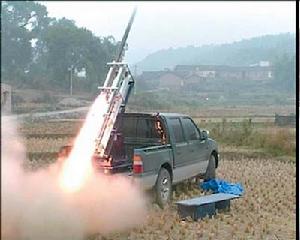
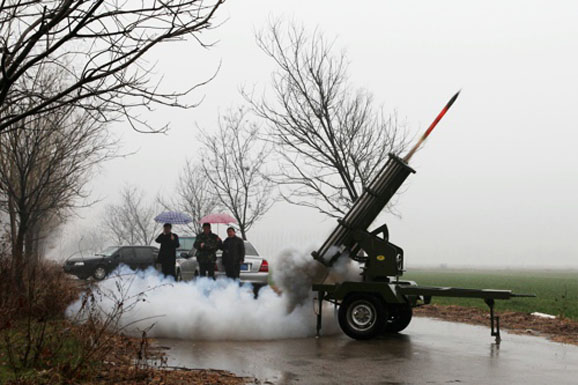
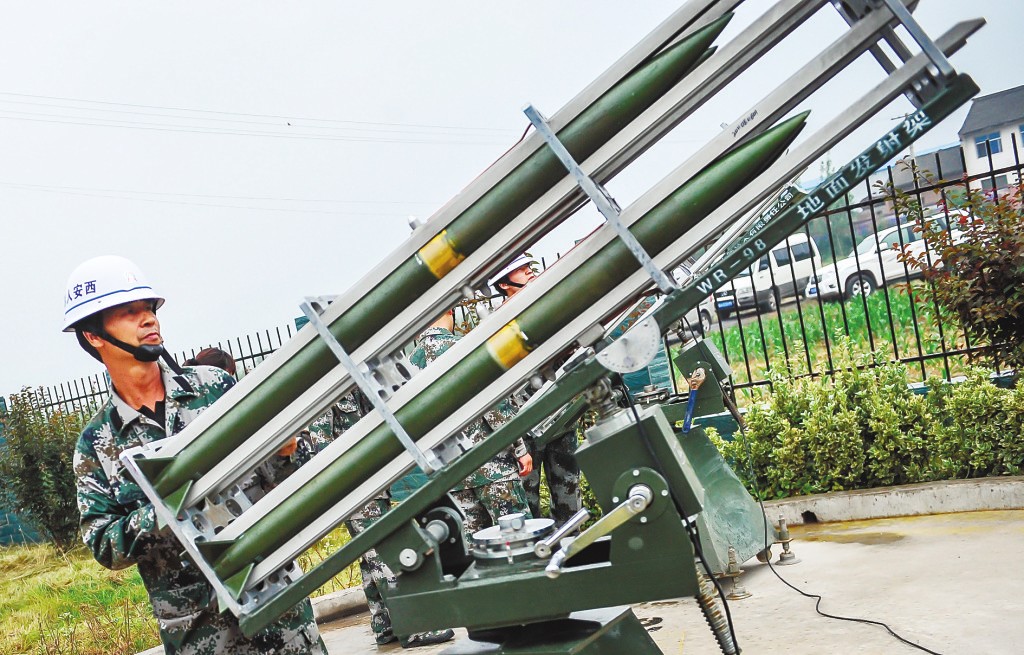

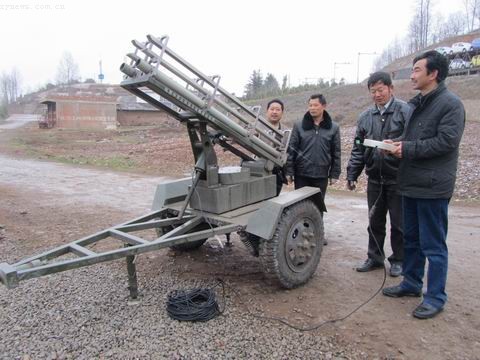
edit on 23-6-2014 by candlestick because: (no reason given)
edit on 23-6-2014 by candlestick because: (no reason
given)
a reply to: candlestick
That's just regular old air pollution. If you can't tie it to some wild conspiracy, I am afraid the folks here won't bat en eye at it.
I do wonder how environmental regulations apply in China as opposed to the US? Any idea?
That's just regular old air pollution. If you can't tie it to some wild conspiracy, I am afraid the folks here won't bat en eye at it.
I do wonder how environmental regulations apply in China as opposed to the US? Any idea?
a reply to: candlestick
Thanks again for what you've added to the thread here. I suppose you could almost say China is generating their own form of SRM entirely by inadvertent pollution and lack of effective controls. Then again, as I've come to learn, China treats climate control and manipulation as a routine matter of business through a central Government office actually dedicated by name to the effort.
It's pretty impressive to see for the efforts...but downright sad to see the pollution end of it. Further, some of those dust storms have been tracked right over the Pacific, over North America and then on into the Atlantic before fully fading from satellite view. It's a small world after all and in more than one way.
Thanks again for what you've added to the thread here. I suppose you could almost say China is generating their own form of SRM entirely by inadvertent pollution and lack of effective controls. Then again, as I've come to learn, China treats climate control and manipulation as a routine matter of business through a central Government office actually dedicated by name to the effort.
It's pretty impressive to see for the efforts...but downright sad to see the pollution end of it. Further, some of those dust storms have been tracked right over the Pacific, over North America and then on into the Atlantic before fully fading from satellite view. It's a small world after all and in more than one way.
a reply to: Wrabbit2000
These reports are often redundant and time consuming to read. They often repeat the same information. But if you're really interested in studying this topic it's good to read them. I have been following this topic for about 4 years now.
Here's a few other reports I have come across. With some interesting snippets.
LINK
Link
Thank you! I really appreciate any solid info folks can add to this and my future threads in this topic area.
These reports are often redundant and time consuming to read. They often repeat the same information. But if you're really interested in studying this topic it's good to read them. I have been following this topic for about 4 years now.
Here's a few other reports I have come across. With some interesting snippets.
LINK
So long as modest low-level field studies designed to answer these questions are done in an open and transparent manner, we believe they should not be subject to any formal international process of vetting and approval. Countries and firms routinely fly various aircraft in the stratosphere, or send rockets through the stratosphere into space. These activities release significant quantities of particles and gases.
A requirement for formal prior approval of small field studies, just because they are directed at learning about
SRM and its limitations, is probably unenforceable because judging intent is often impossible. Such a regulation would, at best, make conducting modest low-level SRM research extremely difficult and, at worst, impossible
Link
2. An Experiment in Arctic Cooling
Many predict that more severe warming will affect the Arctic and the planet within a few decades.
There is evidence that widespread melting of polar ice about 125,000 years ago contributed to a rise
in global sea level 13 to 20 feet (4 to 6 meters) higher than today’s level. Polar temperatures were
about 5 to 9 degrees Fahrenheit (3 to 5 degrees Celsius) higher than they are today (IPCC, 2007).
Thus, the Arctic seems to be particularly vulnerable to climate warming.
Experiments performed at a scale that is too small to affect climate could yield much information
about potential climate and chemical effects of solar radiation management schemes. Particles
deployed in the lower stratosphere near the North Pole in the late spring would be expected to be
substantially removed from the stratosphere in the next polar winter, so unexpected adverse effects
would be unlikely to persist for more than a single year.
a reply to: MagicWand67
I appreciate the links. I have a number of threads I intend to write in the coming couple months that build one block at a time to an end result for a theory I've been working on now for months. It just takes some foundational work to make sense of what it literally has taken months to put together from data here, there and scattered across any number of different places.
Given I'm always evolving my thinking and theories, I really appreciate the additional sources to read about and learn more on the topic.
I appreciate the links. I have a number of threads I intend to write in the coming couple months that build one block at a time to an end result for a theory I've been working on now for months. It just takes some foundational work to make sense of what it literally has taken months to put together from data here, there and scattered across any number of different places.
Given I'm always evolving my thinking and theories, I really appreciate the additional sources to read about and learn more on the topic.
a reply to: Wrabbit2000
That's great. I will be looking forward to reading those.
Are you familiar with this Geoengineering Cost Analysis report?
I would happy to try and help provide additional info if I can.
Are there any specific areas you're focusing on?
That's great. I will be looking forward to reading those.
Are you familiar with this Geoengineering Cost Analysis report?
I would happy to try and help provide additional info if I can.
Are there any specific areas you're focusing on?
new topics
-
World's Best Christmas Lights!
General Chit Chat: 4 hours ago -
Drone Shooting Arrest - Walmart Involved
Mainstream News: 5 hours ago -
Can someone 'splain me like I'm 5. Blockchain?
Science & Technology: 5 hours ago -
Squirrels becoming predators
Fragile Earth: 6 hours ago -
Labour's Anti-Corruption Minister Named in Bangladesh Corruption Court Papers
Regional Politics: 7 hours ago -
Have you noticed?? Post Election news coverage...
World War Three: 7 hours ago -
Georgia appeals court disqualifies DA Fani Willis from Trump election interference case
US Political Madness: 10 hours ago
top topics
-
Georgia appeals court disqualifies DA Fani Willis from Trump election interference case
US Political Madness: 10 hours ago, 25 flags -
Have you noticed?? Post Election news coverage...
World War Three: 7 hours ago, 12 flags -
Squirrels becoming predators
Fragile Earth: 6 hours ago, 9 flags -
Labour's Anti-Corruption Minister Named in Bangladesh Corruption Court Papers
Regional Politics: 7 hours ago, 6 flags -
Drone Shooting Arrest - Walmart Involved
Mainstream News: 5 hours ago, 6 flags -
World's Best Christmas Lights!
General Chit Chat: 4 hours ago, 6 flags -
Can someone 'splain me like I'm 5. Blockchain?
Science & Technology: 5 hours ago, 5 flags
active topics
-
Can someone 'splain me like I'm 5. Blockchain?
Science & Technology • 51 • : CriticalStinker -
Donald Trump to return to X tomorrow - will interview with Elon Musk 8PM
US Political Madness • 214 • : Connector -
Trump Meets Kristen Welker on Meet the Press
Mainstream News • 19 • : NorthOS -
Matt Gaetz ready to go global thermonuclear
US Political Madness • 17 • : Kaiju666 -
Drone Shooting Arrest - Walmart Involved
Mainstream News • 15 • : worldstarcountry -
World's Best Christmas Lights!
General Chit Chat • 7 • : Cre8chaos79 -
Mood Music Part VI
Music • 3746 • : BatCaveJoe -
US Federal Funding set to Expire December 20th. Massive CR on the way.
Mainstream News • 28 • : IndieA -
ILLUMINATION – Reverse Perception Of Cyclic Probability – CEO ASSASSINATION
Secret Societies • 33 • : Compendium -
Smartest Man in the World Tells His Theory About What Happens At Death
Philosophy and Metaphysics • 41 • : TzarChasm
